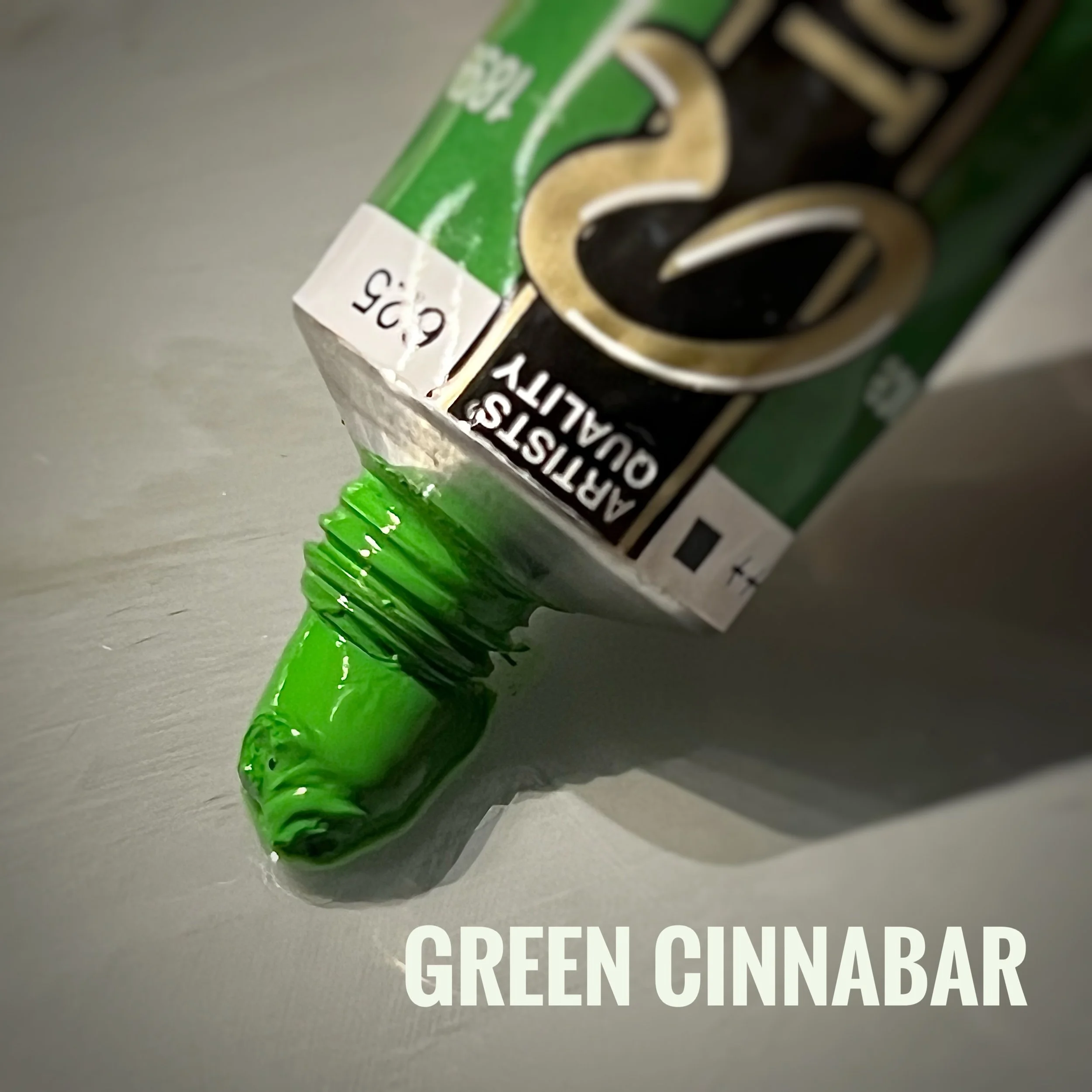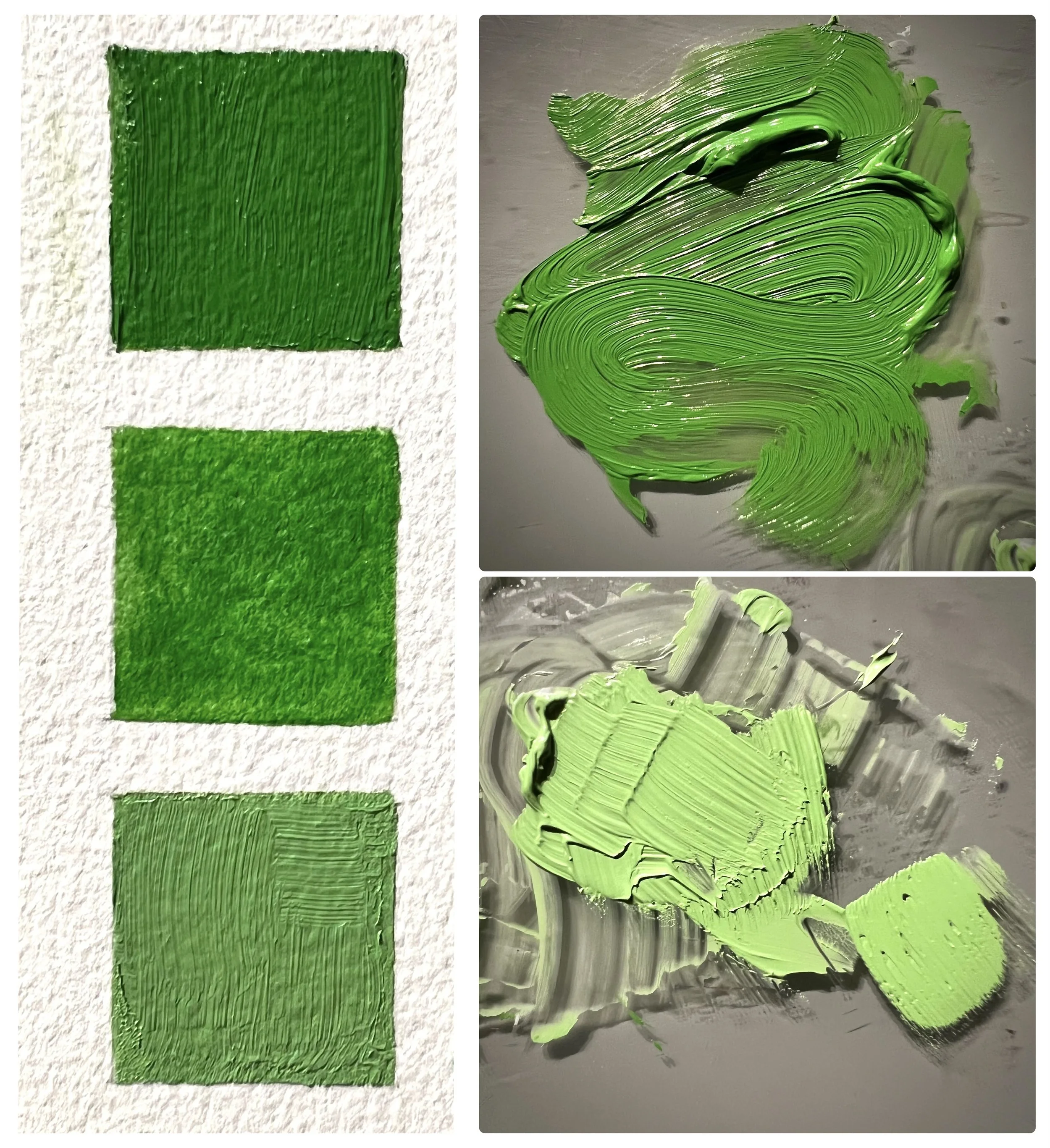Plein Air Landscape Paints: Cinnabar Green
Cinnabar green is warm green, a great color for painting sunlit grass and foliage. Looks chromatic, but it is actually pretty delicate and natural-looking. Here is an example (light green on the background).
Ann’s Apples, September 2023, Sandwich, NH
Cinnabar green has nothing to do with the actual cinnabar, a toxic mercury sulfide, that was used to make Vermilion. Yes, the one famous thank to beautiful Chinese carved lacquer vases. Cinnabar green was initially based on copper arsenic, also toxic and very fugitive. Mainly due to its poor light fast qualities, copper arsenic was replaced with a mix of chrome yellow (this one is toxic, too) and Prussian blue in the early 19th century.
Warm green color of cinnabar green paint.
Nowadays, different manufacturers’ formulas for cinnabar green vary greatly. The one I have is by Rembrandt and composed of 3 pigments: PY154 (benzimidazolone yellow, not sure if I can pronounce it), PG7 (phthalo green), and PY42 (yellow iron oxide, also know as yellow ochre).
Cinnabar green by Rembrandt
Opacity: semi-opaque
Tinting strength: average to high
Lightfastness: high, will not fade
Drying rate: not fast-drying
Hazardous: not really, but do not eat just in case
Price: 40 ml tube is about $14 at Jerry’s Artarama
Cinnabar green out of the tube (applied thickly and thinly) and mixed with lead white.
Interestingly enough, historically authentic green cinnabar paint, composed of two pigments, chrome yellow (PY34, lead chromite) and Prussian blue (PB27, ferric ferrocyanide) still exists and is sold by Natural Pigments. That one is more expensive and is in fact toxic, since it contains lead. I have never used it, however, would be interesting to compare.



